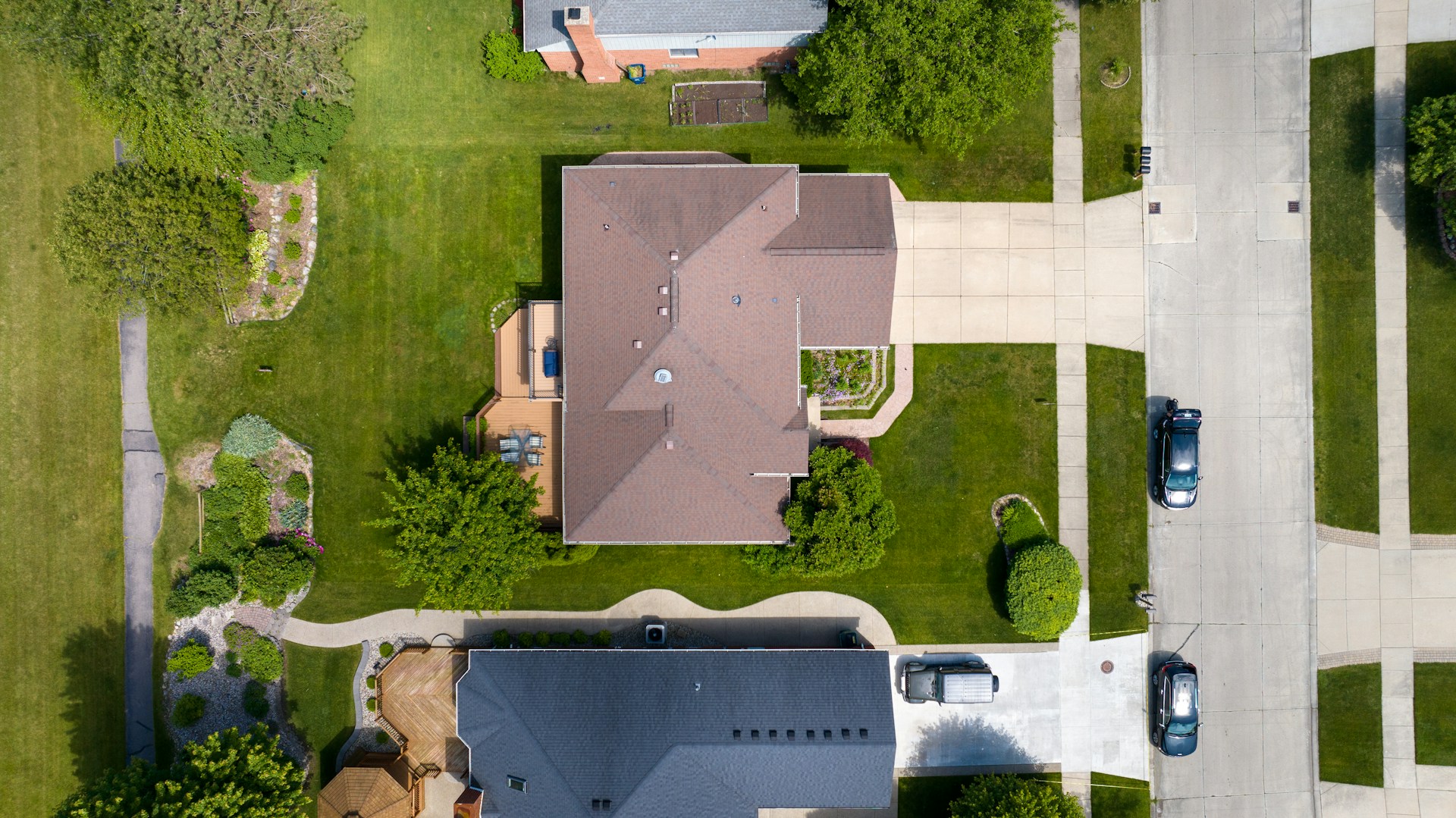Imagine waking up one morning, stepping into your backyard with a cup of coffee, and realizing your neighbor’s new fence is sitting two feet inside your property line. Or maybe a tree planted years ago has grown so wide that its branches hang over your roof. It might not sound like a big deal at first, but these small boundary issues can turn into full-blown disputes if they’re not addressed. That’s where understanding encroachment in real estate becomes essential. Once you know what it means and how it’s handled, you can protect your property rights without unnecessary stress or conflict.
Understanding What Encroachment Really Means
In real estate, encroachment happens when someone builds or extends a structure onto another person’s property without permission. It’s one of those legal terms that sounds more intimidating than it is, but it can have serious implications if ignored. The most common examples include fences, driveways, sheds, tree limbs, and even parts of homes that cross boundary lines.
From a legal standpoint, an encroachment is a violation of property boundaries established in official land surveys or deeds. These boundaries aren’t suggestions—they’re binding limits recorded in county property records. When one property owner crosses them, intentionally or not, it creates a situation that could affect ownership rights, property value, and even your ability to sell later.
As a real estate consultant who’s helped clients navigate property disputes, I’ve noticed that encroachments often start innocently. A homeowner might install a fence where they “think” the line is or add a deck that slightly overlaps the neighbor’s yard. But once discovered, even a few inches can become a point of contention—especially when money or resale value is at stake.
Common Examples of Encroachment in Real Estate
Encroachments can vary in scale from minor inconveniences to major legal headaches. Here are the most common types you’ll see in residential real estate:
- Fence Encroachments: One of the most frequent issues. A fence built across the property line—even by a few inches—can spark years of dispute between neighbors.
- Driveway Encroachments: Pavement or gravel driveways that extend onto another property can complicate access rights and ownership boundaries.
- Structural Encroachments: When part of a building, like a roof overhang, deck, or shed, extends beyond the property line.
- Tree Encroachments: Large trees with branches or roots crossing into neighboring land. Though natural, these can cause damage or become safety concerns.
- Utility Encroachments: When utility installations, such as pipes or poles, are placed incorrectly across property lines without permission.
Most of these encroachments aren’t malicious—they often result from inaccurate measurements or forgotten boundary markers. But even unintentional encroachments can lead to serious consequences if they violate local property laws or cause disputes over ownership and liability.
Encroachment vs. Easement: What’s the Difference?
People often confuse encroachment with an easement, but they’re not the same. An easement is a legal right granted to someone else to use part of your property for a specific purpose. For example, a utility company might have an easement allowing access to power lines on your land, or a neighbor may have a shared driveway easement written into both deeds.
An encroachment, on the other hand, is not permitted or documented. It’s unauthorized and often discovered accidentally during a property survey or sale. The distinction matters because easements are legally recognized and recorded, while encroachments are technically violations that must be resolved before ownership transfers smoothly.
Think of it like borrowing vs. taking. An easement is permission granted with clear terms; an encroachment is an uninvited overlap that needs attention before it grows into a problem.
How to Identify Encroachment on Your Property
Encroachments aren’t always obvious to the naked eye. What looks like an innocent garden expansion or a fence “on the line” might actually extend well into your property. That’s why confirming your boundaries is crucial—especially before buying or making structural changes. Here’s how professionals usually identify them:
- Property Surveys: A licensed surveyor measures and maps your land’s boundaries based on recorded legal descriptions. Surveys are the most accurate way to identify encroachments.
- Title Search: During a property transaction, title companies review public records to spot existing easements or disputes that may suggest encroachments.
- Visual Inspection: If you notice a structure suspiciously close to your boundary line, document it and compare it to your property’s plat map.
- Boundary Markers: Some properties have metal stakes or markers embedded at corners from prior surveys. Locating these can help you spot potential overlaps quickly.
You might be surprised how often encroachments appear during home sales. A buyer’s lender usually requires a survey before closing, and that’s when overlapping fences or structures come to light. It’s a common reason for delayed closings or renegotiations—something both buyers and sellers want to avoid.
What Happens If You Discover an Encroachment?
Finding out that a neighbor’s property overlaps with yours—or vice versa—can feel uncomfortable. It’s tempting to jump to legal action, but many cases resolve amicably once both parties understand the facts. Here are the most typical ways encroachments are addressed:
- Communication: Start by talking directly with your neighbor. Many encroachments can be fixed through open discussion and mutual understanding.
- Boundary Agreement: Both owners can sign a formal agreement acknowledging the encroachment and setting clear boundaries moving forward.
- Encroachment Easement: If removing the structure isn’t practical, the affected owner may grant an easement allowing it to remain legally in place.
- Sale or Adjustment: In some cases, owners agree to sell or exchange the encroached portion of land to permanently resolve the issue.
- Legal Action: As a last resort, one party may file a lawsuit to force removal or seek damages, but this route is time-consuming and expensive.
In my experience, kindness and communication go further than legal threats. Many neighbors have no idea they’re encroaching until someone brings it up. If handled calmly, both parties can usually reach an agreement that preserves good relationships and property rights.
Can Encroachment Affect Property Value?
Absolutely. Even minor encroachments can complicate financing, insurance, and resale value. Lenders and title companies prefer properties with clean, undisputed boundaries because unresolved encroachments create uncertainty about ownership. A buyer may hesitate to purchase a home that comes with potential legal baggage.
From an appraisal perspective, an encroachment might reduce value if it limits usable land or introduces the risk of future disputes. On the flip side, resolving an encroachment proactively can increase buyer confidence and make your property more attractive when it hits the market.
Appraisers, real estate agents, and title officers all stress the same advice: resolve any boundary issue before you sell. It’s far easier to fix now than to lose a qualified buyer later over a preventable technicality.
How Encroachment Differs from Adverse Possession
Encroachment and adverse possession share a common theme—one person using another’s property—but the legal outcomes are different. Adverse possession occurs when someone occupies another’s land openly and continuously for a legally defined period (often 10–20 years), potentially gaining ownership rights through the courts.
Encroachment, by contrast, doesn’t automatically grant ownership even if it’s long-standing. It’s a boundary issue, not a transfer of rights. However, if an encroachment remains unchallenged for many years, it could evolve into an adverse possession claim depending on state laws. That’s why it’s crucial to act quickly when you spot an issue.
Adverse possession laws exist to encourage landowners to monitor and maintain their property boundaries. Ignoring an encroachment indefinitely might signal abandonment, which courts can interpret as forfeiting rights. Protecting your property starts with awareness.
Preventing Encroachments Before They Happen
The best way to handle encroachment is to prevent it altogether. Whether you’re building a fence, planting trees, or planning an addition, a little preparation goes a long way toward avoiding conflict later. Here’s what helps most:
- Get a Professional Survey: Before construction, confirm your boundaries with a licensed surveyor. Even experienced contractors can make mistakes.
- Communicate with Neighbors: If you’re making visible changes near property lines, let your neighbors know. Courtesy prevents misunderstandings.
- Check Local Zoning Laws: Some municipalities require specific setbacks between structures and property lines.
- Review Your Deed: Deeds often include descriptions of easements or restrictions that affect where you can build.
- Document Everything: Keep survey results, building permits, and photos of your boundaries for future reference.
Encroachment prevention is as much about relationships as regulations. A quick conversation today can save months of stress tomorrow. Good fences make good neighbors, but only when they’re built in the right place.
How to Handle Encroachments When Selling or Buying a Home
If you’re selling a property, disclosing known encroachments is not just good practice—it’s often required by law. Failing to mention them can lead to lawsuits if the buyer later discovers the issue. Transparency builds trust, and most buyers appreciate sellers who handle boundary concerns upfront.
For buyers, reviewing surveys and title reports before closing is essential. Ask your agent or attorney to explain any boundary discrepancies clearly. If an encroachment is discovered, you can negotiate with the seller to fix it, adjust the price, or secure title insurance coverage for potential risks.
These small steps prevent big surprises. Real estate transactions are complex enough without hidden boundary problems lurking in the background.
Final Thoughts
Encroachment in real estate is more than a technical term—it’s about the lines that define where your home, privacy, and investment begin. Whether it’s a misplaced fence or a neighbor’s shed that edges too close, resolving encroachments early protects both your property rights and your peace of mind.
Most of these issues aren’t about greed or bad intentions—they’re about clarity. And clarity starts with communication, documentation, and the willingness to understand where your property truly begins and ends. Once you do, you’ll feel more grounded, not just in your home but in your confidence as a property owner.
⚡ Sell Your House Fast
"*" indicates required fields

Pavel Khaykin
Pavel Khaykin is the founder and author of Pavel Buys Houses, a nationwide home buying company that helps homeowners sell their properties quickly for cash. With a strong background in real estate and digital marketing, Pavel has been featured in The New York Times, ABC News, and The Huffington Post. His mission is to make the home-selling process simple, transparent, and trustworthy for every homeowner he works with.







